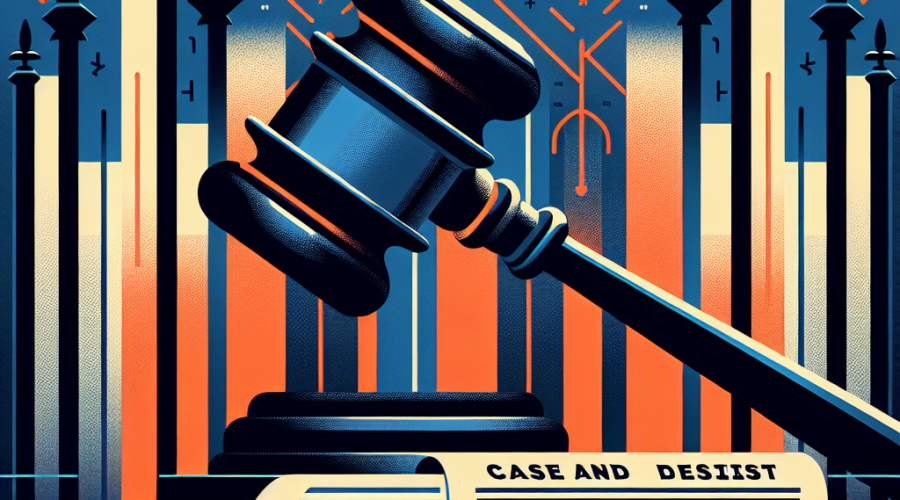NEAR Protocol Faces Governance Crisis Over Token Emissions Proposal
The NEAR Protocol, a prominent Layer 1 blockchain, finds itself in the center of a heated governance controversy that encapsulates a persistent debate in crypto: Should projects prioritize decentralized process or short-term pragmatic survival? The immediate catalyst for this dispute is a proposal to drastically reduce protocol emissions, putting NEAR’s internal values and structural decision-making processes under the spotlight. As a result, the community is now forced to grapple not only with issues of network sustainability, but also with existential questions of legitimacy and governance integrity.
The Proposal: Halving NEAR’s Protocol Emissions
Since June, NEAR’s community has wrestled with a decisive proposal: reduce the network’s token emissions rate from 5% to 2.5% per year. This measure aims to address what critics identify as an unsustainable imbalance—namely, substantial token inflation with insufficient network adoption and revenue.
The core argument backing the proposal is rooted in hard data. While NEAR currently issues roughly $140 million worth of tokens each year to incentivize validators and secure the network, it supports a mere $157 million in total value locked (TVL) and has generated approximately $3.2 million in protocol fees so far in 2024. This means that the security expenditures are severely disproportionate to actual network use.
For comparison, Solana, another major Layer 1 blockchain, issues an estimated $5.5 billion in tokens annually. However, it boasts a vastly more robust and active decentralized finance (DeFi) ecosystem with around $11 billion total value locked. Solana’s fee revenue and community activity justify much greater issuance, whereas NEAR’s current approach appears unsustainable without significant growth.
Community Deliberation and Governance Procedures
NEAR’s proposal to cut emissions represents far more than a simple budget adjustment: it’s a crucible for the protocol’s governance structure. After weeks of debate, controversy, and lobbying, the proposal was recently put to a community vote. Under NEAR’s current governance system, any such change must secure at least a 66.67% supermajority to pass.
Although the emission-reduction measure did achieve a simple majority in the final voting, it did not meet the higher approval threshold required by protocol rules. Accordingly, under the explicit guidelines of NEAR’s governance framework, the proposal should have been deemed unsuccessful—at least for now.
But despite falling short of this critical milestone, rumblings soon emerged that NEAR’s core contributors might still implement the changes through a nearcore software update, which would then rely on the network’s on-chain upgrade process for activation. This possibility has sparked serious concern among validators, particularly those who expect governance decisions to be final and binding.
Validator Backlash and the Chorus One Critique
Validators, who act as the backbone of NEAR’s security and consensus, have been especially vocal about this unfolding situation. Chorus One, a major validator operator in the NEAR ecosystem, publicly criticized the notion of sidestepping established governance rules. According to Chorus One, honoring the system’s governance procedures—however inefficient or frustrating in individual instances—is crucial to maintaining trust, transparency, and legitimate decentralization.
These objections have deep roots in the ethos of blockchain technology, which aspires to minimize centralization and rely on community consensus. By deploying an upgrade that bypasses a failed community vote, NEAR risks undermining the foundational principles that differentiate it—and the broader crypto ecosystem—from traditional tech startups or centralized networks.
The Counterargument: Pragmatism vs. Principle
On the opposing side, some industry figures support a more pragmatic approach. Louis Thomazeau from L1D Fund, for instance, contends that cutting emissions is simply “common sense” economics. From this viewpoint, the survival and financial prudence of the protocol must take precedence over what he characterizes as “blind adherence” to ideals of decentralization.
Thomazeau and likeminded proponents argue that rules should be flexible where the health of the network is at stake. To them, permitting excessive inflation due to procedural rigidities is a mistake that could endanger the protocol’s medium-term viability. Startups, especially in fast-moving industries like blockchain, should not tie their own hands with inflexible governance systems. In this lens, following procedure for its own sake becomes antithetical to the project’s survival and growth.
Crypto’s Recurring Governance Dilemma
NEAR’s dilemma is far from unique in the evolving world of decentralized technologies. In fact, the crypto industry repeatedly confronts scenarios where the needs of security, pragmatism, and governance collide.
One recent example involved Hyperliquid, a decentralized derivatives platform. After a trader manipulated the JELLY perpetuals market, resulting in significant losses for the HLP vault, the team took direct custodial action: They delisted the asset and manually overrode the oracle price to close out positions and protect depositors. This intervention ran contrary to the “code is law” philosophy revered throughout crypto, but it arguably prevented greater harm and may have preserved user trust and solvency.
Another class of examples includes situations where blockchains are halted or hard-forked in response to network exploits or catastrophic hacks. The Binance Chain halt in 2022, and the Ethereum hard fork after the 2016 DAO hack, both illustrate how even the most committed decentralized projects sometimes bend their own rules during moments of crisis.
These situations raise perennial questions: Should the spirit or letter of governance systems take precedence? When does breaking process set a dangerous precedent, and when does it constitute responsible stewardship?
The Risks of Bending Governance Rules
When projects override or reinterpret their own governance systems, they risk far more than backlash from dedicated community members. There is the danger of eroding trust—once rules are seen as variable, the legitimacy of the entire protocol can be called into question. In the most extreme cases, users, developers, and investors may simply migrate to alternative blockchains with more reliable and predictable governance.
Additionally, setting a precedent where core developers can push through unpopular or insufficiently ratified changes begins to mirror the centralized authority of traditional companies or “admin keys”—exactly the kinds of power structures blockchain technology was designed to undermine.
This “Fed put” scenario, where an invisible hand always overrides the community when things get tough, could suppress innovation and discourage meaningful community participation in governance processes. The threat is especially acute for Layer 1 protocols, which must maintain a delicate balance between technical flexibility and reputational decentralization.
The Costs of Conservative Governance
On the other hand, slavishly adhering to slow, sometimes unresponsive governance processes may also damage a young Layer 1 blockchain like NEAR. If unsustainable incentives aren’t addressed rapidly, the system could see runaway inflation, validator apathy, token price collapse, and dwindling security. By the time a perfect consensus is reached, the damage may already be done.
Especially in the context of a fiercely competitive market, taking “the loss” and accepting short-term pain can be a costly luxury. NEAR’s economic security, user trust, and overall momentum hinge on timely decisions, sometimes requiring difficult trade-offs between principle and pragmatism.
Looking Ahead: What Will NEAR Do?
NEAR Protocol now stands at a crossroads. Proceeding with the emissions cut despite a failed governance vote would deliver a “good” outcome in economic terms, potentially reducing token inflation and shoring up long-term network sustainability. However, it would also signal to current and future participants that governance rules are flexible—and perhaps subject to the priorities of core contributors.
Alternatively, should NEAR accept the failed vote, it would reinforce its commitment to transparent and predictable governance. This may cost the network in the short term, but could pay dividends by preserving long-term legitimacy and trust.
Regardless of the immediate outcome, NEAR’s current predicament highlights the ongoing challenges of balancing efficiency, decentralization, and resilience as blockchain technology matures. The decisions made here will likely ripple throughout the wider crypto landscape, serving as both a warning and a lesson for the next wave of governance controversies.
As NEAR and other blockchains mature, how they handle such crises may become just as important as network throughput or technical innovation. In the end, legitimacy and innovation must evolve side by side, with the community, developers, and investors all playing vital roles in shaping the protocols of tomorrow.


















